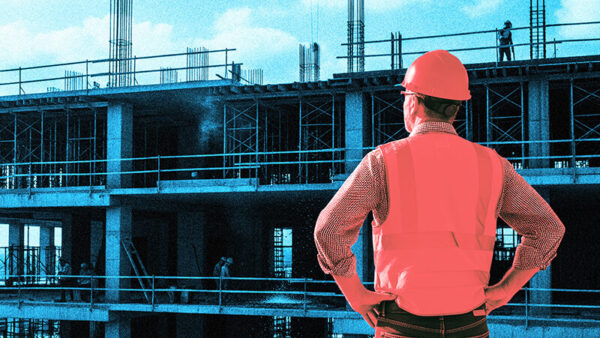Subcontractors indirectly affected by ISG’s fallout might be concerned about the potential impact on their businesses. Alex Mosson and Adam Kitchin share five considerations to take into account to minimise risks.

The administration of ISG has caused significant concerns in the industry, with the shockwaves likely to affect all manner of suppliers, from cleaning companies to legal advisers.
Here are some key issues which employers, subcontractors and suppliers should bear in mind in the event of a main contractor becoming insolvent.
Payment
Upon the occurrence of a formal insolvency event (i.e. an administration or liquidation), any payments due from the contractor will most likely remain unpaid.
The appointed insolvency practitioner(s) (IP) will invite creditors to submit a proof of debt, however, the prospects and timing of any payments may be uncertain. In any event, all creditors of the insolvent entity should register themselves as creditors with the relevant IP and keep a detailed record (including evidence) of monies owed.
Many standard form contracts such as the JCT provide that upon entering into administration or liquidation no further sums shall become due to the contractor. Nevertheless, employers should consider the terms of their contracts and consider serving appropriate pay less notices.
Subcontractors and suppliers should take steps to limit future exposure to the insolvent company, such as postponing work, material, deliveries and/or the incurrence of further costs.
Live projects
All operations and work on live projects will likely cease.
Affected parties should engage with the IP to establish whether any live contracts are to be novated to other trading entities of the contractor’s group or acquired by third parties. This includes employers/funders who may have ‘step-in’ rights.
Parties should keep a detailed record of the status of the works as of the date of the contractor’s insolvency event. Such a record should assist any employer in pursuing a claim against the contractor (either directly or via its security package). The record should also assist subcontractors who may face claims in respect of alleged defective works.
Parties should consider whether to exercise any formal contractual rights of termination. In most standard form contracts the administration/insolvency of a party constitutes an insolvency event upon which the other party is usually entitled to terminate.
Careful consideration should be given to the specific terms of any contract and collateral warranties with step-in rights. The right of termination may be conditional rather than automatic. Do not assume that the contract is terminated on insolvency.
Site considerations
Where subcontractors and suppliers have supplied materials that have not been paid for by the contractor, or where employers have paid the contractor for materials that have not been supplied, a party with a claim should contact the IP, providing proof of ownership.
Similarly, if subcontractors and suppliers have left tools or equipment on live sites, arrangements should be made with the IP to collect them. Note that the ownership and right to the tools or equipment needs to be evidenced contractually and factually.
Employers should take steps to secure any live sites, including implementing their own security measures and insurance, if relevant. The JCT suite of contracts provides that the employer is entitled to secure site materials.
Employers should also ascertain whether there are any offsite materials they have paid for and whether there is a right to ownership.
Security packages
Employers may consider making calls on available security documents (e.g. performance bonds, parent company guarantees, or vesting certificates). For calls under parent company guarantees, the wider liquidity of a contractor’s group may be impacted.
Parties should keep a detailed record of losses suffered due to the insolvency event, including the cost of completing outstanding or defective works. The cost to complete the works after an insolvency event may be the proper measure of damages arising from the insolvency event. As such, clear records will be essential if a claim is made under a performance bond or parent company guarantee.
Actions against the company
Where a company enters administration or liquidation, it is protected by the statutory moratorium provisions of the Insolvency Act 1986. Accordingly, no further insolvency can be commenced by creditors. Nor can secured creditors enforce security over company assets.
Should the IP not contact you, contact the IP directly to register your claim as a creditor.
Where, upon conclusion of a company’s insolvency, there are any assets available for distribution, such available assets are paid following insolvency legislation which prescribes the order of priority of payments.
Distributions are first paid to fixed charge creditors (e.g. those with fixed charges secured against the contractor’s real estate or other fixed charge assets), then to expenses of the insolvency process (e.g. the IP’s fees and disbursements), then to preferential creditors (e.g. monies owed to employees in respect of wages and monies owed to HMRC), then to the prescribed part, floating charge creditors and then to unsecured creditors (if there are any assets remaining).
Monies owed to suppliers, subcontractors and employers will, absent any security over such debts, likely rank as unsecured debts. It is likely therefore that unsecured creditors will receive a limited distribution from the dissolution of the company, if anything at all.
Alex Mosson is a senior consultant and Adam Kitchin is an associate at Hill Dickinson.











